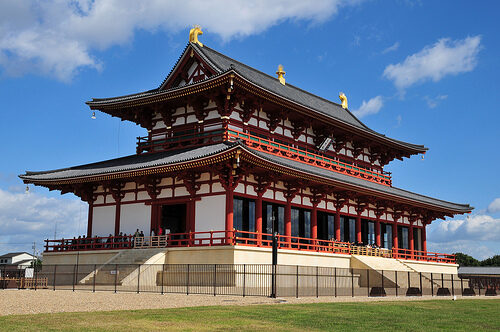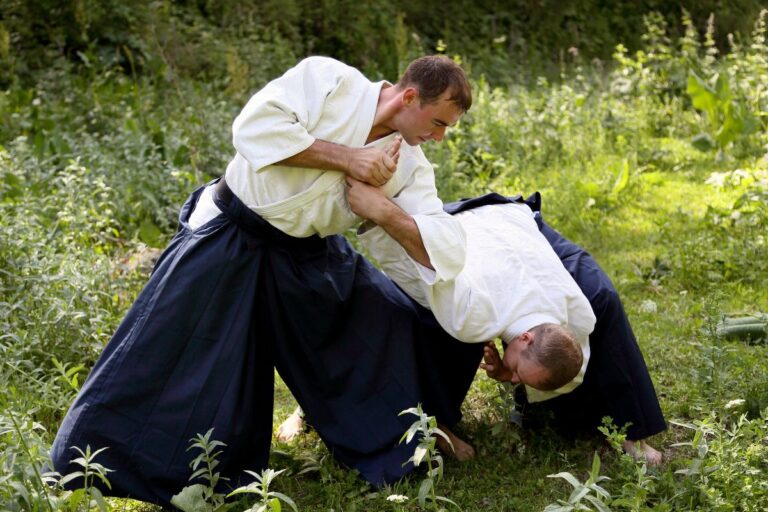The Battle of Shizugatake was fought on Mt. Shizugatake in Omi Province on the northeastern ridge between Lake Biwa and Lake Yogo. The battle was fought in May of 1583, a year after the death of Oda Nobunaga, between the forces of Toyotomi Hideyoshi and another trusted Oda general, Shibata Katsuie.
Akechi Mitsuhide had attacked and killed Nobunaga at the Honnoji Temple in June of 1582, and Hideyoshi had then been opportune in avenging his master’s death, attacking Mitsuhide at Yamazaki.
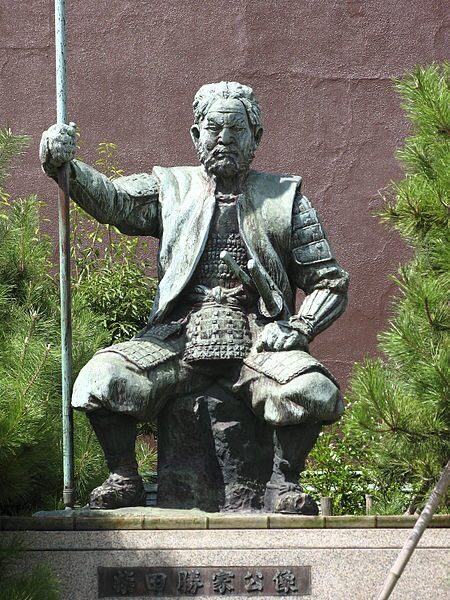
(Shibata Katsuie)
The death of Nobunaga left a power vacuum. Of Nobunaga’s five sons, the youngest, Katsunaga was killed along with his father at the Honnoji. The eldest son, Nobutada was killed in the fighting at Nijo Castle following the initial attack on the Honnoji. The fourth son Hidekatsu was just 15 years old and had been adopted by Toyotomi Hideyoshi, leaving the two middle sons, Nobuo and Nobutaka, as well as Nobutaka’s infant son, Samboshi, Nobunaga’s grandson as potential heirs.
It was also contested by Nobunaga’s Shukuro, his most senior retainer, the very able general Shibata Katsuie, on behalf of Nobunaga’s son Nobutaka, who took residence in Gifu Castle. Nobutaka’s brother Nobuo resided in Kiyosu. Hideyoshi favored Nobuo, pushing for the one-year-old Samboshi to be named as heir. It seems Hideyoshi intended to take control through the child. Had Nobunaga’s family and vassals been able to cooperate, they may well have found it easy to oust Hideyoshi.
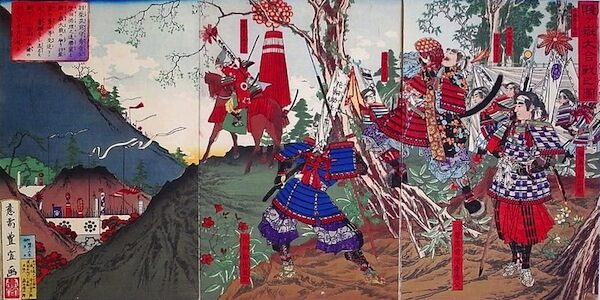
They couldn’t, and Hideyoshi’s skill in manipulating people worked to his advantage, however, he was constricted with Nobutaka in Gifu, and Shibata Katsuie in the northern districts, while another Oda ally, Takigawa Kazumasu in Kameyama, Ise Province (Mie Prefecture) watched over the important Tokaido highway. During that winter, while Shibata’s supporting troops were snowed in, Nobutaka foolishly made a move against Hideyoshi, who, with the permission of Nobuo, responded with such force, Nobutakan surrendered immediately.
Next, Takigawa threatened a joint two-sided assault from himself on one side, and the other coming from Shibata Katsuie’s son, Kazutoyo who held Hideyoshi’s former castle on the banks of Lake Biwa at Nagahama. Bribing the younger Shibata, Hideyoshi then turned his troops on Kameyama Castle, attacking them until Takigawa capitulated. Hideyoshi then considered the very real threat of Katsuie becoming mobile as spring approached.
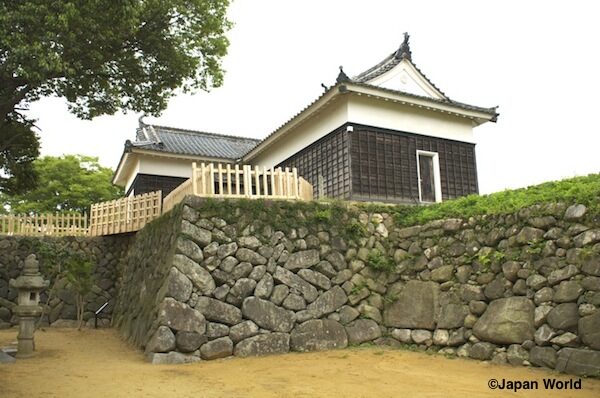
(Kameyama Castle)
To prevent Shibata Katsuie’s advance by either the eastern or western sides of Lake Biwa, Hideyoshi ordered four small forts be built on the mountains dividing Biwa and the smaller Lake Yogo. The northernmost and overlooking the vital Nakasendo highway was Iwasaki-yama. This he left in control of Takayama Ukon. Below that was Oiwa, to the east of Oiwa on the other side of the Nakasendo sat Hideyoshi’s half brother Hashiba Hidenaga in Tagami Fortress, while on the highest peak, and right between the two lakes was Nakagawa Kiyohide at Shizugatake. There they waited.
As the country emerged from the winter cold, Hideyoshi was suddenly forced to return along the Nakasendo to Ogaki Castle in order to lay siege against Gifu and put down an insurrection by Oda Nobutaka. It turned out to be fortuitous for Hideyoshi. Not long after Hideyoshi had left the north Biwa region, Shibata Katsuie ordered his nephew Sakuma Morimasa to take these castles. Sakuma and his 15,000 samurai attacked Iwasaki-yama first, winning it easily as Takayama Ukon retreated to Tagami. Sakuma’s troops then surrounded both Oiwa and Shizugatake. He soon captured Oiwa, and in laying siege to Shizugatake, the fortresses commander Nakagawa Kiyohide was killed. Sakuma then made the mistake of disobeying his uncles’ orders.
“Never underestimate Hideyoshi. When you capture Oiwa, move your troops into it!” were Katsuie’s instructions. Instead, Sakuma set siege line camps around Shizugatake. Hideyoshi was at Ogaki. It wouldtake three days to move his 20,000 troops back to Shizugatake, by which time Sakuma figured he could have taken the mountaintop fortress.
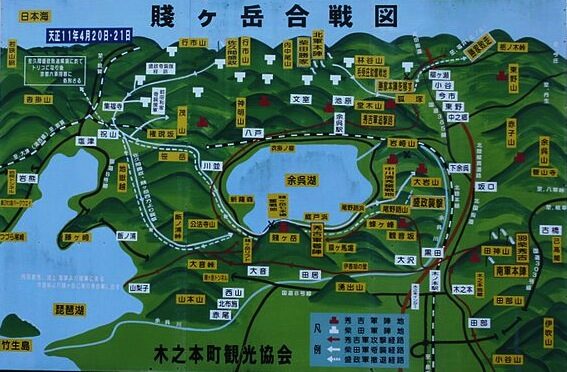
That evening, Samuma Morimasa was more than surprised to see thousands of flaming torches burning at the base of the mountain. Hideyoshi’s army had moved into position in less than a day, and together with the men of Tagami Castle, were in a position to seriously threaten Sakuma. And that is exactly what they did!
Kato Kiyomasa and Fukushima Masanori were amongst the warriors in support of Hideyoshi at this swift, but violent fight. They and Kato Yoshiaki, Wakizaka Yasuharu, Hirano Nagayasu, Katagiri Katsumoto, and Kasuya Takenori, would become renown as the Shichi Hon Yari, or Seven Spears of Shizugatake for their
martial valor. A contender for the title of Eight Spear, Ishikawa Heisuke had been killed in action. So fierce was the fighting that the troops of Samuma Morimasa were said to have abandoned their weapons and armour in order to flee the mountain back to the safety of Shibata Katsuie’s castle of Kitanosho, about 50 km away in Echizen, (modern day Fukui City) built by Katsuie in 1575, and at nine stories high, Japan’s largest at the time.
Hot on the heels of the fleeing troops were those of Hideyoshi’s army. Katsuie knew his situation was hopeless, but could not bring himself to surrender to the likes of the monkey faced Hideyoshi. Instead, he begged his wife, Nobunaga’s sister Oichi, to leave the castle. She refused, although her three daughters, who’s father, Azai Nagamasa, had committed suicide in his burning keep, were taken to safety. Katsuie and his wife set the castle on fire and took their lives in the way of the samurai.
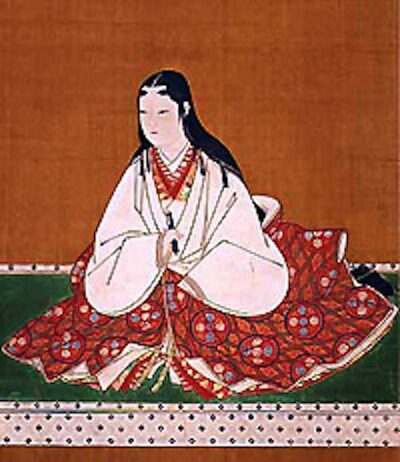
(Oichi)
The castle keep was destroyed by fire at the end of the battle, when Katsuie conceded defeat
and committing seppuku, died honorably with his wife, Oichi in the burning fortress. A fine statue
of Katsuie now stands on the castle site where only a few stone foundations remain.
With the demise of Shibata Katsuie, Toyotomi Hideyoshi now ruled the nation.
